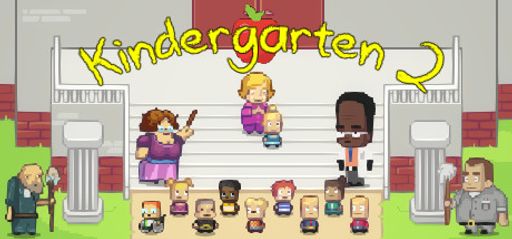Few games blend the innocent charm of grade school with the outrageous chaos of dark comedy quite like Kindergarten 2. As the sequel to a cult hit, this bizarrely endearing adventure delivers even more twisted antics, mischievous puzzles, and delightfully dysfunctional classmates. Whether you’re in it for the snarky humor, cleverly layered storylines, or just to see how many ways a school day can spiral into madness, this game has something for every curious troublemaker. With curiosity (and maybe a little dread), I stepped back into the blood-stained backpack of Monday’s survivor—ready for another day of explosive science experiments, suspicious janitors, and morally questionable field trips.
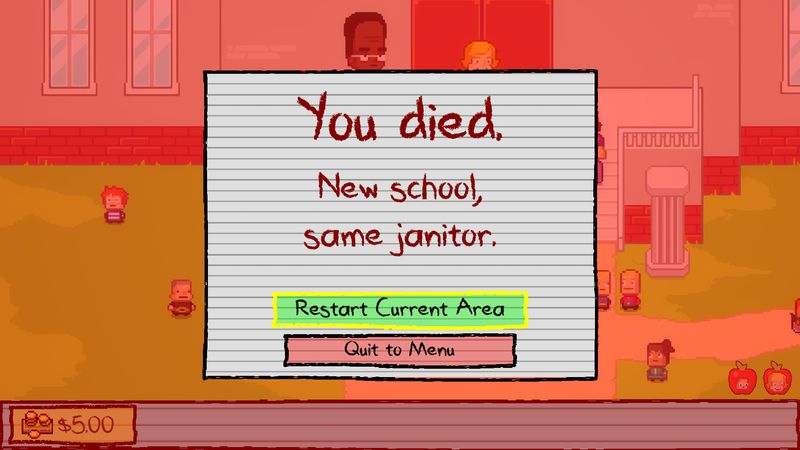
Overall Impressions
I dove into Kindergarten 2 with a mix of excitement and nerves. The first game charmed me with its cheeky humor and quirky characters, and I was eager to see if the sequel could top it.
Spoiler alert: it absolutely does.
The expanded school map, new friends (and foes), and a sharp increase in dark comedy crank the chaos up to eleven. The blend of childlike innocence and over-the-top violence feels oddly refreshing. It’s a wild ride that made me smile, gasp, and laugh more often than I expected. If you enjoy casual puzzlers laced with twisted humor, this one’s a must-try.
Gameplay Mechanics
Kindergarten 2 retains the point-and-click adventure format of its predecessor. You’ll explore the school, talk to NPCs, collect items, and solve puzzles. What stands out is how flexible the mission paths are. I discovered—thanks to other players and my own experimentation—that characters like Felix and Ted have alternate routes that lead to wildly different outcomes. Finding those secret branches felt like discovering hidden candy in your lunchbox.
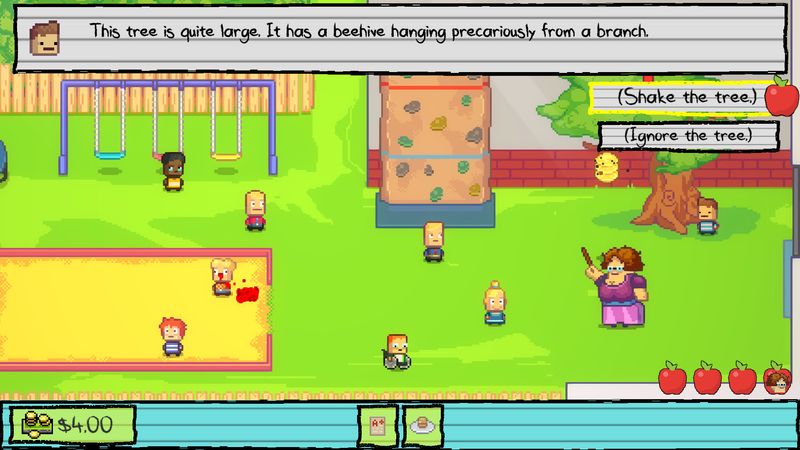
Puzzles range from simple fetch quests to clever mini-games sprinkled throughout the school. Some were a bit too easy—fittingly so, in a school setting—but the pace kept things engaging. I wrapped my first run in about four hours, and it never felt like a slog. Many players note the game “doesn’t take too much of your time,” and I agree. It strikes a great balance between quick fun and satisfying depth.
I did get stuck once or twice—mainly because I missed a conversation trigger—but that only pushed me to explore further. This led to fun discoveries, like a hidden locker filled with bizarre items. The controls are smooth, making it easy to jump in and start playing.
Story and Characters
The story picks up on Tuesday, right after the events of the first game. You’re back at school with a mix of familiar faces and new classmates. The writing is witty, sharp, and even surprisingly heartfelt in small, quiet moments between the madness. Each kid has a unique backstory and quirky personality.
Felix, the theatrical drama kid, and Ted, disturbingly polite, quickly became my favorites. Returning characters like Matsuki (still obsessed with gummy bears) blend seamlessly with newcomers who each bring a new brand of chaos.
What really makes the story memorable is its branching paths and multiple endings. I found myself replaying parts of the game just to see how one decision—like trusting the creepy janitor—would change things. A few NPCs drop hints or silly rumors about secret areas, which adds to the fun of replaying.
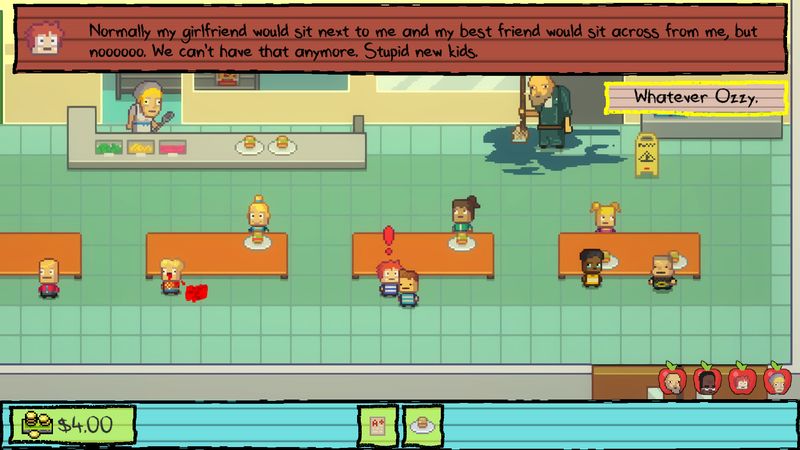
Visuals and Graphics
The art style is bright, cartoonish, and feels like a child’s drawing splashed in neon. It’s simple yet expressive, perfectly complementing the game’s twisted tone. The expanded school map includes new areas like a vibrant art room and a bubbling science lab, all filled with playful details.
Character sprites are hilariously goofy, making even the gruesome moments feel more comic than grim. Visually, the game runs smoothly on modest PCs. I didn’t encounter any glitches or stuttering. Bonus: the developers hid fun doodles on the walls that reference their other indie titles. Fans of Con Man Games will enjoy spotting these Easter eggs.
Sound and Music
The soundtrack is one of Kindergarten 2’s highlights. It mixes playful chimes, upbeat tunes, and eerie melodies that signal incoming chaos. One fan review mentioned the music as their favorite part, and I completely agree. Each room has its own tone—from bubbly and fun to tense and foreboding—adding emotional depth without needing voice acting.
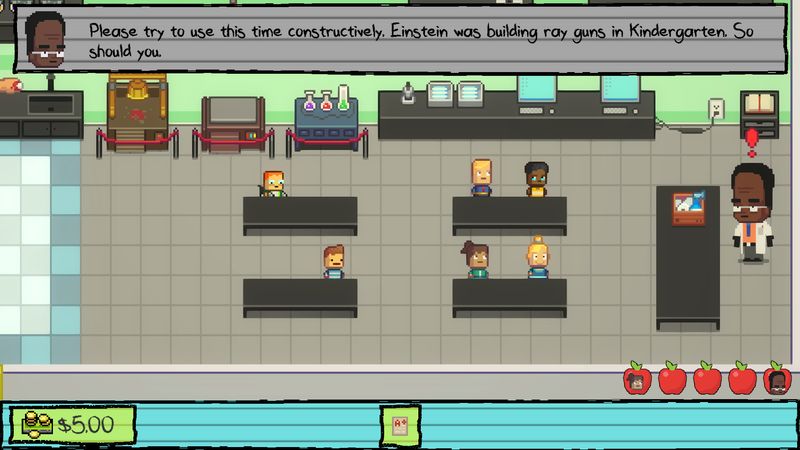
Sound effects are crisp and immersive: footsteps echo down empty halls, lockers creak open, and items swoosh with satisfying impact. Although there’s no voice acting, the witty text dialogue fills that gap with ease, striking a perfect balance between childlike banter and sharp satire.
Difficulty and Replayability
This isn’t a brain-melting puzzle game, but it keeps you thinking. The challenges are approachable and often have multiple solutions, encouraging experimentation. That flexibility makes replays worthwhile, as you can chase different character arcs and endings on subsequent runs.
My first playthrough lasted about four hours, but chasing secrets and alternate outcomes doubled that easily. A player once said, “Of the three, this has my favorite school… overall the best of the three in my eyes.” I haven’t played the third game yet, but I get the sentiment. Once you finish, you’ll likely want to jump back in and uncover every secret—or trash-talk a few kids in new ways.
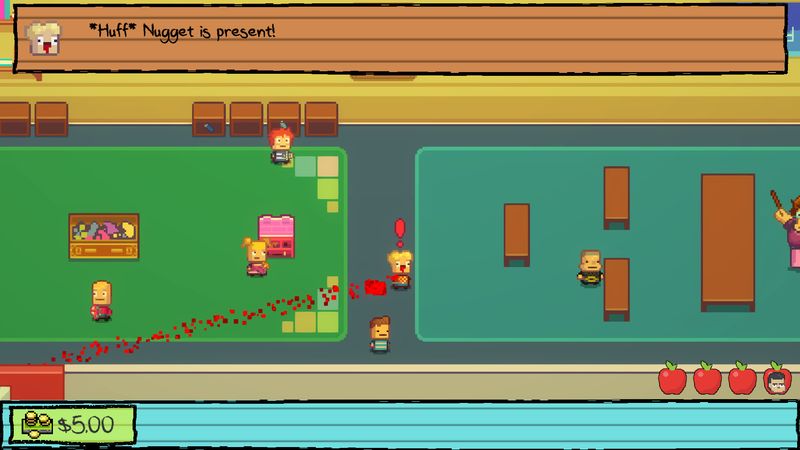
Developer Trivia
Con Man Games is a small indie studio run by two friends who met at a game jam. They built the original Kindergarten in about six months, and after its surprising success, they spent over a year fleshing out this sequel. Word is they hand-drew a lot of the sprites on paper before scanning them in, which explains the quirky, doodle-like vibe you see on screen.
Final Thoughts
Kindergarten 2 is a cozy-but-wild experience that mixes simple puzzles, dark humor, and charming visuals into one addictive package. Whether you’re a casual player like me or someone who loves digging into every possible ending, there’s plenty here to enjoy. It’s short enough to breeze through in an evening but deep enough to keep you coming back for more.
Rating: 4.5 out of 5 stars
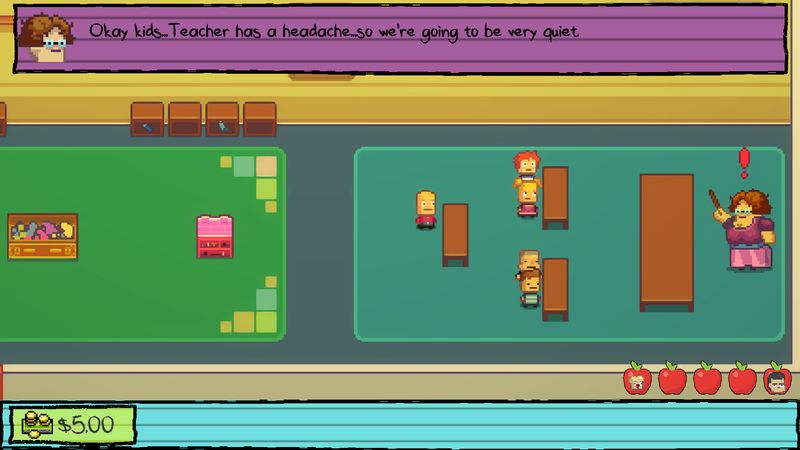
Pros
Kindergarten 2 excels at blending clever puzzle design with dark, hilarious storytelling. Each puzzle offers multiple solutions, encouraging players to experiment and replay missions for different outcomes. The writing is sharp, packed with twisted humor that’s both outrageous and surprisingly smart. Its hand-drawn art style adds a playful yet eerie charm, perfectly matching the game’s tone. The soundtrack and sound effects further enhance the experience, shifting from lighthearted tunes to suspenseful audio cues at just the right moments. For fans of quirky indie games with high replay value, Kindergarten 2 delivers an addictively entertaining ride.
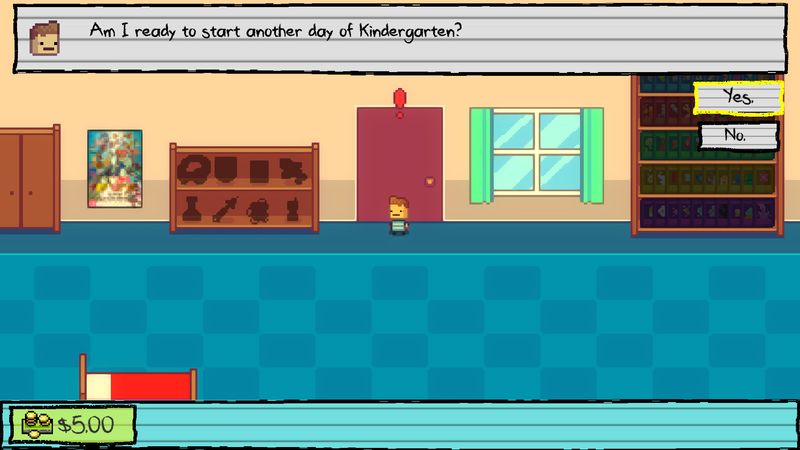
Cons
While Kindergarten 2 offers plenty of charm and creativity, it may feel a bit too easy for seasoned puzzle game enthusiasts. Some missions can be solved with minimal effort, which might reduce the challenge for veterans of the genre. Additionally, the game includes a few minor navigation hiccups—like unclear paths or overlooked dialogue triggers—that could briefly disrupt the flow. However, these issues are small and don’t significantly detract from the overall fun. If you’re looking for a casual puzzle adventure with humor and heart, the pros far outweigh the cons.
If you’re looking for a laid-back yet unpredictable adventure with a dash of chaos, Kindergarten 2 is just the ticket. Grab your backpack, make a new friend (or two), and brace yourself for some delightfully nasty surprises. Happy gaming!

